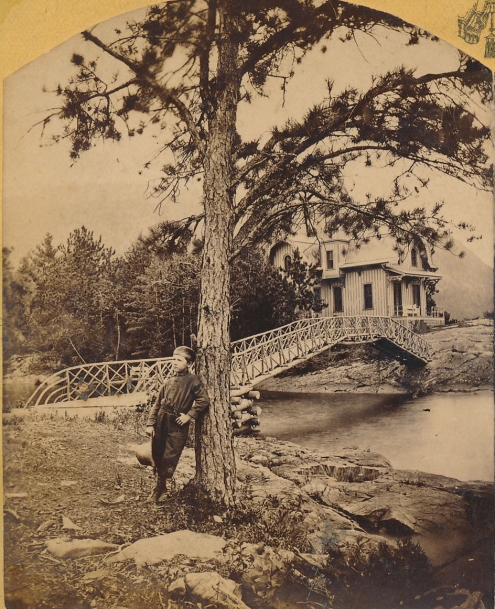
A child poses across the cove from the Lakeside Inn circa 1890.
Many thanks to Mark Stanton who passed along this picture from his collection. If anyone has any idea who the child is, Mark would like to hear from you.
Click to see full-scale.

News & Opinion About Huletts Landing, N.Y.
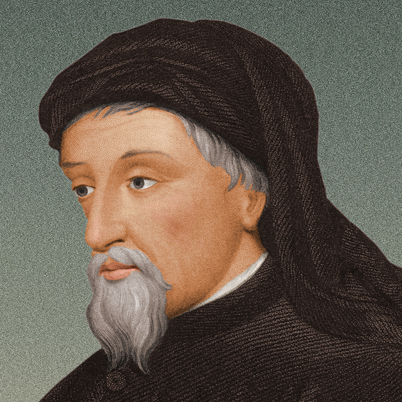
Geoffrey Chaucer -1382
The first recorded association of Valentine’s Day with Romantic Love is in Parlement of Foules where Geoffrey Chaucer is believed to have invented the lore that birds choose their mates on Valentine’s Day…
Chaucer wrote:
“For this was on seynt Volantynys day, Whan euery bryd comyth there to chese his make.”
[“For this was Saint Valentine’s Day, when every bird cometh there to choose his mate.”]
This poem was written to honor the first anniversary of the engagement of King Richard II of England to Anne of Bohemia. A treaty providing for a marriage was signed on May 2, 1381. (When they were married eight months later, they were each only 15 years old).
From Wikipedia.
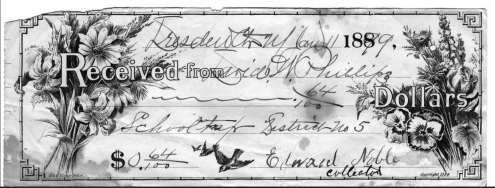
A school tax receipt from 1899.
In the documents Lane DeMuro recently passed on to me from David W. Phillips, there was a school tax receipt from 1899. This is a real shocker compared to today’s rates but the school tax bill was 64 cents (yes, cents) for the entire year. The signature on the receipt (for the school) is Edward Noble, who must be from the Noble family that Noble island is named for.
Click image to see full scale.
“Winter is with us; raw, cold, mild, all the time, snow all around us, lake frozen with a big crack in the ice right through the middle from Rogers Rock to Bolton Landing. It broke open with a big boom heard all around us; Whitehall, Fair Haven, even Glens Falls. About every day a storm, rain, freezing and everything, or more snow. We just try to get by till spring.”
Excerpted from a letter written to Pat Brotman
from Huletts resident, Irene Phillips.
February 4, 1973
(40 years ago.)
In regards to my earlier post regarding the 1889 Hulett Hotel Bill from David W. Phillips, I heard from Mrs. Nina Danforth two interesting facts:
1.) David was the father of Irene Phillips, not her grandfather or great uncle as I had earlier surmised.
2.) David Phillips was also the builder of the Danforth house at Land’s End, another bit of information that I did not know.
Many thanks to Mrs. Danforth for this information.
Lane DeMuro also passed along a bit of interesting information regarding the Phillip’s farm house. Part of Irene Phillips’ farm house was originally a barn that was built on Noble Island. One winter it was placed on skids and dragged across the ice then up to the farmhouse. It was the north east extension, where the kitchen was. It was a post and hand hewn beam structure that was taken down in the 1970’s.
I believe David Phillips’ house became the farm house and boarding house Irene Phillips lived in.
Some interesting information to note.
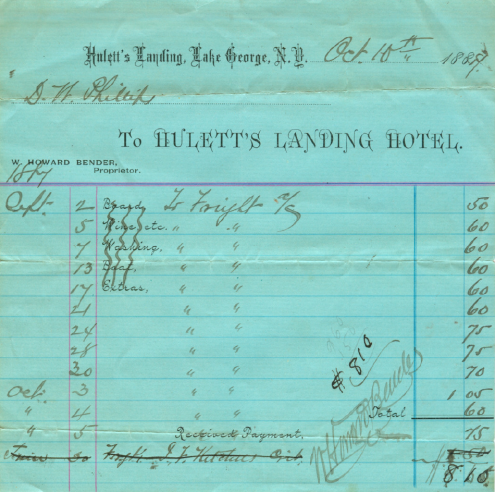
Here’s a true piece of Huletts treasure! An actual bill from the hotel dated in 1889.
This is a quite a find, thanks to Lane DeMuro.
Here’s some of the back-story. In 1889, the hotel was owned by W. Howard Bender and only had roughly 100 rooms. To illustrate how early this was in the history of the hotel, in 1889 “the hotel” would have been just the annex to the original Hulett farm house. Bender had purchased it around 1882 from railroad executive C.W. Wentz. Bender’s manager, for the first time that year, was Henry W. Buckell. Buckell would go on to purchase and expand the hotel and even serve as Dresden Town Supervisor down the road. Bender’s signature can be seen on the lower right side of the bill.
The bill was made out to David W. Phillips, who would go on to live in Huletts for many years afterward and may have been Irene Phillip’s grandfather or great uncle. It looks like the entire bill was for $8.10.
Many thanks to Lane DeMuro for emailing me a copy of this.
Click on image to see full-scale.

A newspaper receipt from the Washington County Post, dated July 30, 1894, to Mr. David W. Phillips of Huletts Landing.
Lane DeMuro emailed me a number of documents today from David W. Phillips of Huletts Landing, dating from the 1800’s and early 1900’s. Included was a newspaper receipt from the summer of 1894.
Many thanks to Lane DeMuro for passing this along.
Click on image to see enlarged view.
Many thanks to Mark Stanton for sharing pictures of this Huletts Beer Stein from 1911. Mark has this very unique item in his collection and sent me pictures of it. I have never heard of “Elephant Mountain Golf Club” or A.W. Clarke but it appears that this is a trophy or award for winning a golf match from 1911. What a fascinating piece of memorabilia!
(Click on Images to See Full-Scale.)
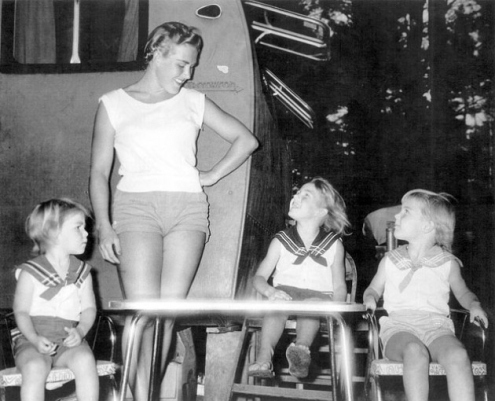
Diane Struble with her three children. (Picture from OpenWaterPedia.com)
On August 22, 1958, Diane Struble entered the water in Ticonderoga and swam the entire length of Lake George in 35 hours. She became the first person to swim the entire length of the lake. I had never seen any video of her swim nor thought any existed.
That is until Peter Ballantye sent me this movie clip his parents took during the summer of 1958 as she passed by Huletts.
The video is short but it is in color and it captures history in the making.
Many thanks to Peter Ballantyne and the Ballantyne family for sharing this rare historical treasure.
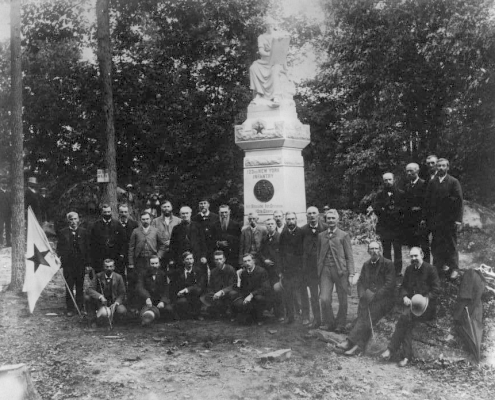
Survivors of the 123 NY Volunteers at the dedication of their monument at Gettysburg, PA on September 4, 1888. (25 years after the battle of Gettysburg.)
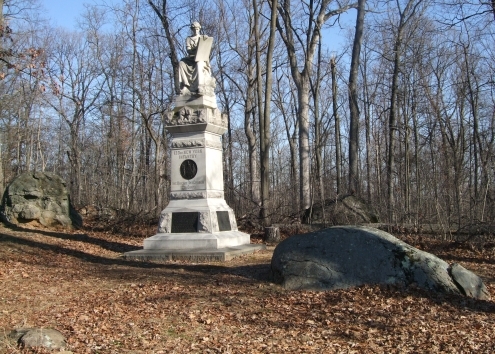
The monument as it looks today. The 123rd was comprised of volunteers from Washington County, NY including the towns of Dresden and Whitehall. (The 150th anniversary of the battle of Gettysburg will be July 1-3, 2013.)
(Top two pictures only – click to see full scale.)
Face plate of the monument reads:
123rd. New York
Infantry
1st. Brigade 1st. Division
12th. Corps
Imagine a young man from Washington County, NY in August of 1862 who volunteers to serve in the Union army. He gets sent to Washington DC, where he is assigned to the Army of the Potomac and winds up marching to Gettysburg in July 1863, where he will not only take part in the battle which arguably turns the course of the war but his regiment defends an important part of the Union line.
Well, that’s exactly what happened to Washington County’s 123rd brigade. Mustered into the Union army in September 1862, they joined the Army of the Potomac and were engaged in the battles of Chancellorsville and Gettysburg before being transferred to the Army of the Cumberland where they participated in the Campaign of Atlanta, the March to the Sea, and the Campaign of the Carolinas. The survivors were mustered out of Washington, DC, at the close of the war, on June 8, 1865 and returned to Washington County, NY.
Last week, I traveled to Gettysburg, located the monument to the 123rd, and learned about the heroics shown by our local citizen-soldiers there in 1863. The story which follows should be known by all residents of Washington County.
To begin, the battle of Gettysburg was a series of bloody skirmishes that took place during three days: July 1-3, 1863. The Confederate army was at it’s peak and had marched up through Virginia into Pennsylvania. Confederate General, Robert E. Lee, wanted to attack Washington DC from the north and hoped to conclude the war if successful. He had approximately 94,000 men with him. The Union army was in a defensive fishhook-like position defending the high ground on a number of hills south and west of Gettysburg. Union General, George Meade, commanded approximately 75,000 men.
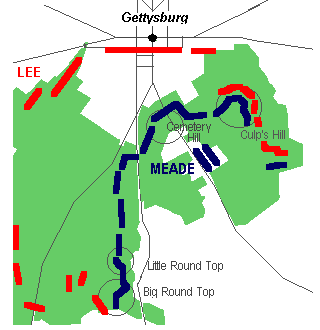
A map of the Gettysburg battlefield. Union forces (in blue) were shaped in a fishhook-like position defending the high ground south of the town of Gettysburg. Confederate forces (in red) attacked over a three day period from the north. Culp’s Hill was important because it was the right flank of the Union line.
The 123rd marched north to Gettysburg from Littlestown, PA on July 1, 1863. The next day, they advanced up Culp’s Hill and formed the right flank of Union lines. They constructed a heavy breastwork barricade of logs. At about 6 p.m. on July 2, 1863 they moved to support the left flank of Union lines near Little Round Top. Returning in the night they found the works they had constructed earlier in the day in possession of the Confederacy as no troops had been left to occupy them.
The 123rd engaged in the most ferocious fighting on July 3rd. During the morning, under cover from artillery from Connecticut’s 20th, they made a charge up Culp’s Hill and recovered the works they had constructed the previous day. They then proceeded to fend off two assaults by Confederate troops who wanted to retake the Culp’s Hill position and breach the right flank of the Union line.
NY’s 123rd saw close fighting on July 3rd at the battle of Gettysburg. Confederate forces came up Culp’s Hill through the woods after the 123rd had retaken this position. This is the view the Washington County soldiers would have had of advancing Confederate troops.
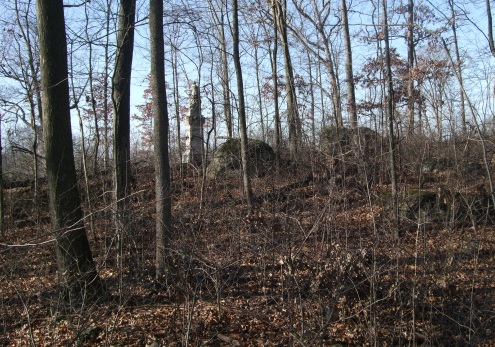
After recapturing the high ground, Washington County forces fought from a position of strength from barricades they had constructed the previous day. This is the view the Confederate soldiers would have had of the dug-in 123rd. Log fortifications, hastily constructed the day before, and boulders were used as protection by the 123rd. (This area is directly behind where the monument is now located.)
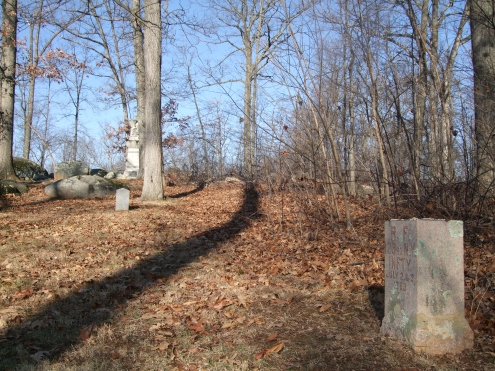
The marker in the bottom right corner shows the right-flank of the 123rd’s line on Culp’s Hill.
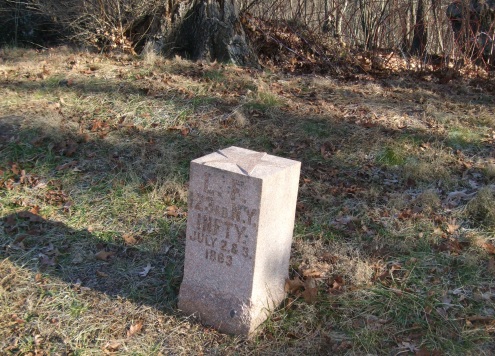
The stone marker shows the left-flank of the 123rd’s line on Culp’s Hill.
Once the southerners retreated from Culp’s Hill around mid-day, the 123rd was ordered to support the Union front line repelling Pickett’s charge at about 4 pm. This famous frontal assault by the Confederate’s would end in defeat and prove devastating to the South at Gettysburg. Later in the evening of July 3rd, after the 123rd had returned to Culp’s Hill, there were more skirmishes with the southerners, where heavy causalities were taken by the Confederates.
Lee retreated with the remnants of the Confederate army into Virginia. General Meade breathed a sign of relief, knowing that the Union troops had repelled the South and defended Washington, DC.
The 123rd left Gettysburg on July 4, 1863. In total, during the three days of fighting, they lost 14 soldiers.
Today, there is an observation tower on Culp’s Hill where much of the Gettysburg battlefield can be seen.
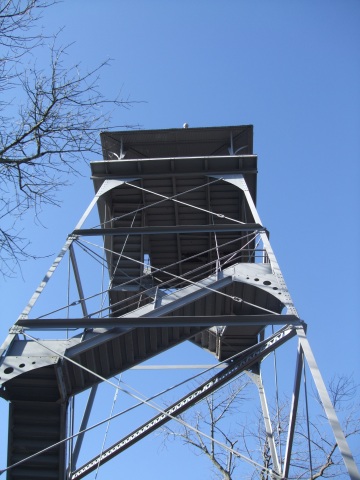
The Culp’s Hill observation tower today.
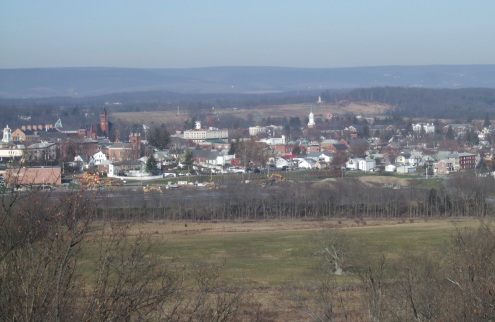
A view of Gettysburg, from the Culp’s Hill observation tower. Pickett’s charge took place below.
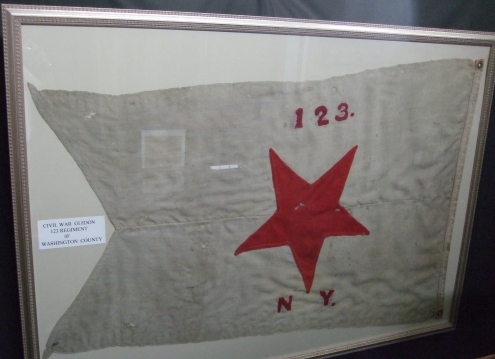
The 123rd’s flag, hangs in the Skenesborough Museum in Whitehall.
The new movie adaptation of Les Miserables opens on Christmas day. Victor Hugo’s eloquent preface to his novel is below. The poet and humanitarian of France, has in this passage set forth the purpose of one of the half-dozen greatest novels of the world.
The Preface to “Les Miserables”
By Victor Hugo
SO long as there shall exist, by reason of law and custom, a social condemnation, which, in the face of civilization, artificially creates hells on earth, and complicates a destiny that is divine, with human fatality; so long as the three problems of the age—the degradation of man by poverty, the ruin of women by starvation, and the dwarfing of childhood by physical and spiritual night—are not solved; so long as, in certain regions, social asphyxia shall be possible; in other words, and from a yet more extended point of view, so long as ignorance and misery remain on earth, books like this cannot be useless.
Victor Hugo
January 1, 1862
Here is the new movie trailer:
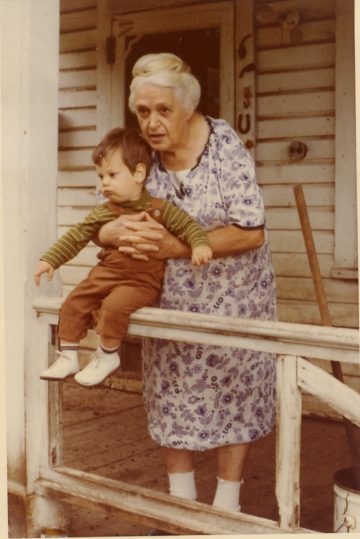
Irene Phillips holding Dave Brotman in 1972.
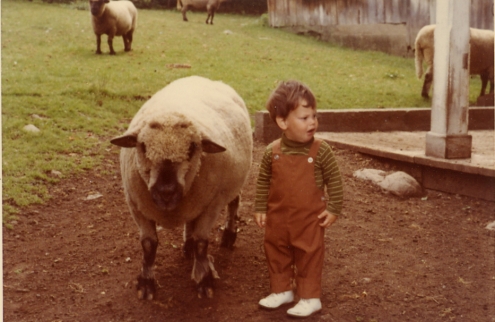
Dave Brotman with Irene Phillip’s sheep, “Big Bill.”
I received these two pictures from Dave Brotman. Dave’s mother (Pat) was friends with Irene Phillips. They rented the Kissy cottage from 1969 to the early 80’s and Dave’s mother and Irene would send each other letters throughout the winter months. These were pictures of Dave with Irene Phillips and the sheep, of course.
Dave’s going to check with his parents to see if they have some more pictures. Irene Phillips property was just past the Catholic church as you head down Land’s End. I can still see the sheep and cats as I passed by as a child on my bike.
Many thanks to Dave for sharing these!